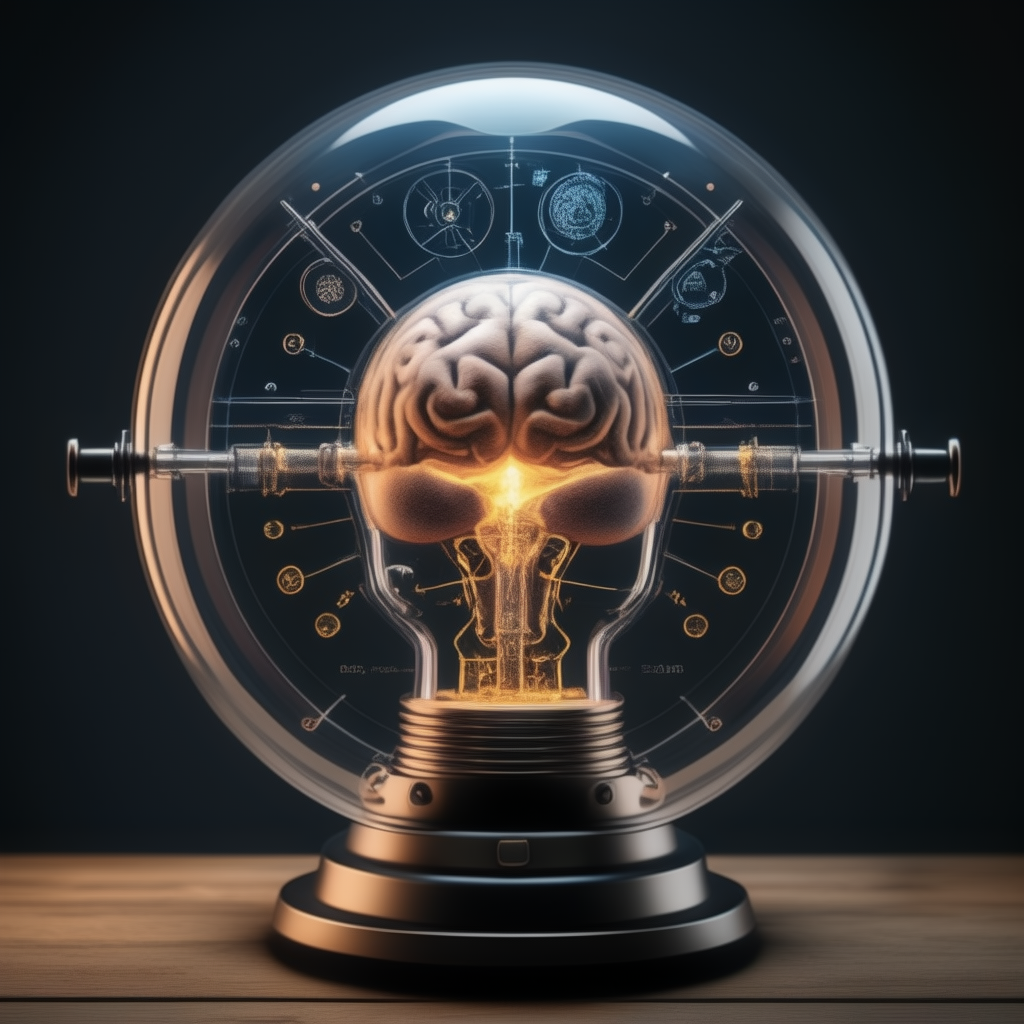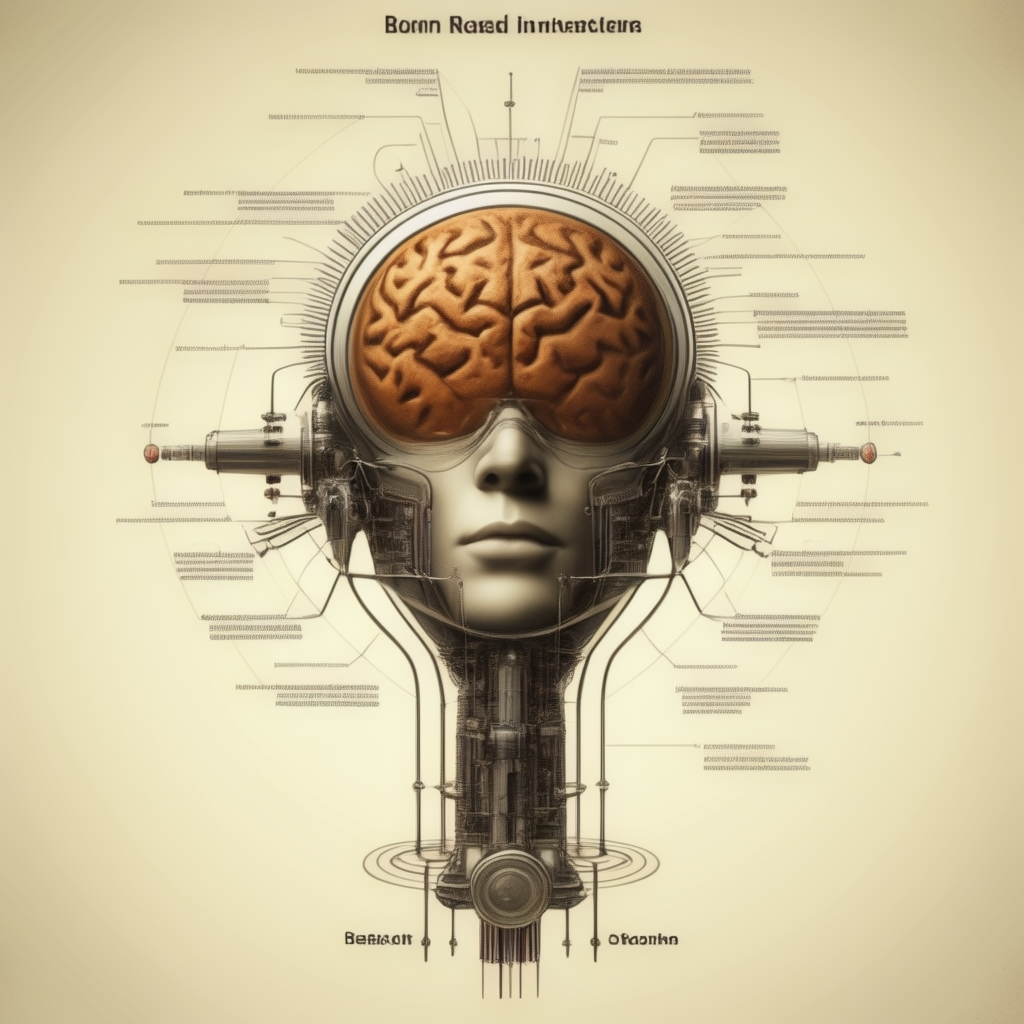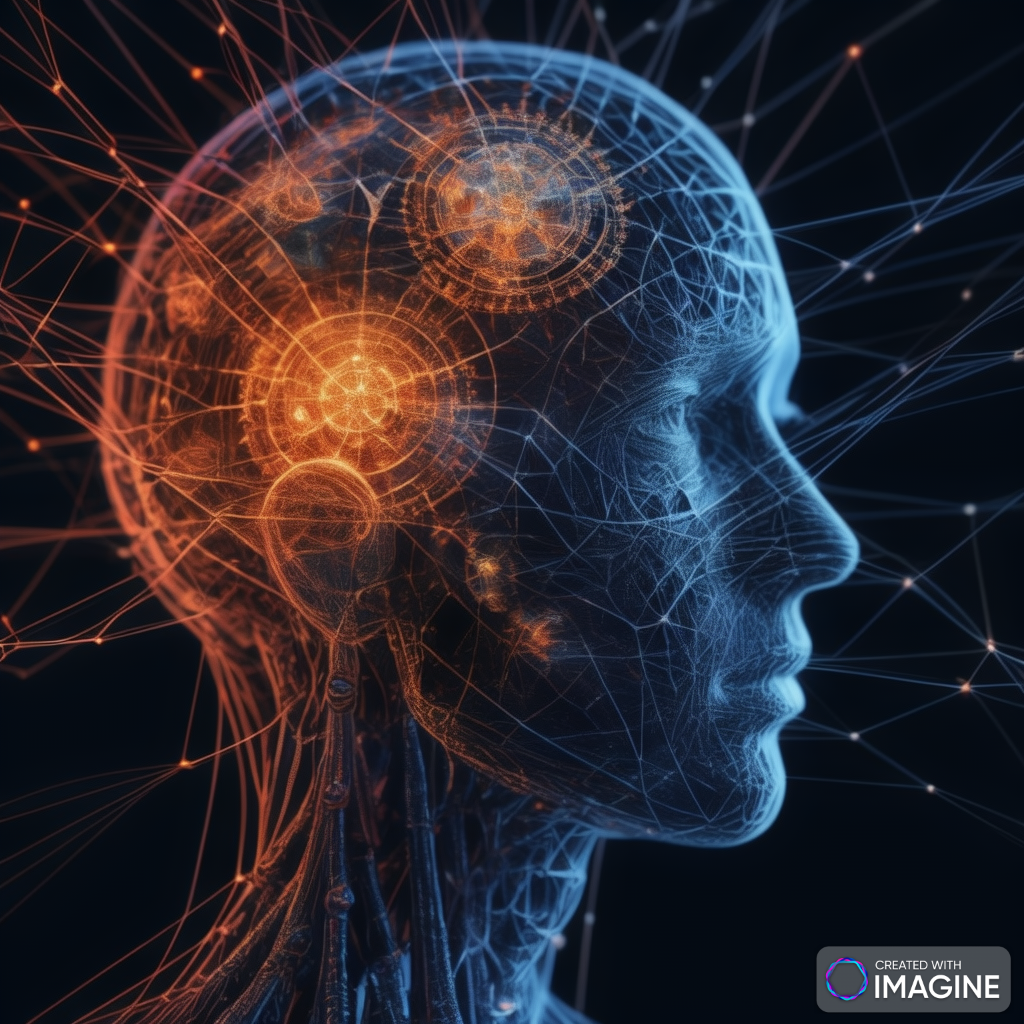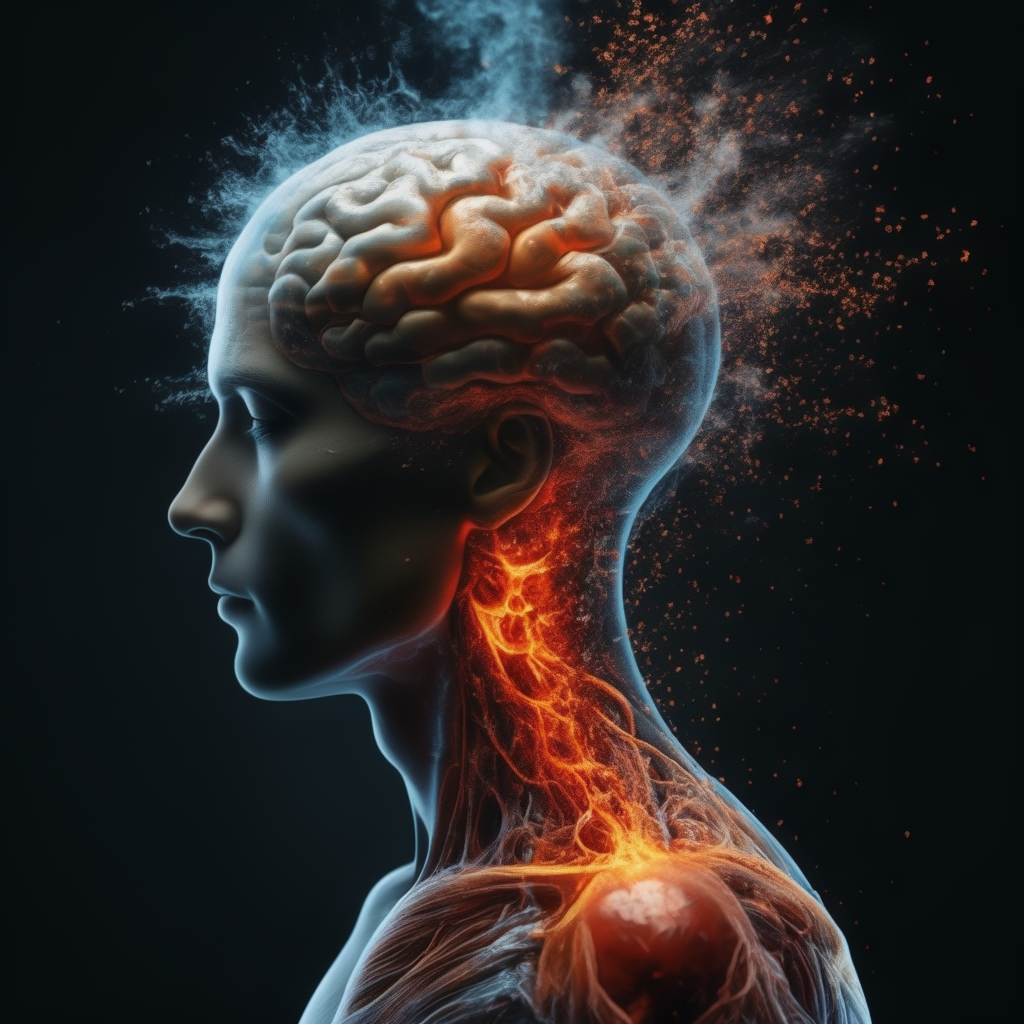when we say that Artificial Intelligence (AI) and Machine Learning (ML) are mimicking human intelligence, we are essentially talking about creating mathematical models that simulate the activity of the brain or biological neurons. Mathematics plays a huge role in AI/ML, as these fields are fundamentally built upon mathematical principles that seek to represent and emulate neural processes in machines. Let’s break this down further:
1. Neurons and Neural Networks in Biology
The brain is composed of billions of neurons, which are the basic building blocks of the nervous system. Neurons communicate through electrical impulses and neurotransmitters. Each neuron receives signals through its dendrites, processes these signals, and transmits an output signal through its axon to other neurons.
When we talk about “mimicking” this process in AI, we’re referring to artificial neural networks (ANNs)—mathematical models inspired by how biological neurons work.
2. Artificial Neural Networks (ANNs) as Mathematical Models
Artificial neural networks are composed of layers of artificial neurons (often called nodes) that are interconnected. Each node in an ANN is a mathematical function that takes in one or more inputs (similar to how a biological neuron receives signals), performs a mathematical operation, and produces an output (analogous to a neuron’s firing).
In an artificial neural network:
- Inputs: Represent features or data (e.g., pixels in an image or words in a sentence).
- Weights: Numerical values assigned to the connections between nodes, representing the strength of the connection (similar to synaptic strengths in biological neurons).
- Activation Functions: Mathematical functions that determine whether a neuron “fires” (produces an output), mimicking the process of a neuron becoming active. Common activation functions include sigmoid, ReLU (Rectified Linear Unit), and softmax.
The relationships between inputs, weights, and outputs are governed by equations like:
z=w1x1+w2x2+…+wnxn+bz = w_1x_1 + w_2x_2 + … + w_nx_n + bz=w1x1+w2x2+…+wnxn+b
Where:
- zzz is the net input to a neuron,
- wiw_iwi are the weights (learned during training),
- xix_ixi are the inputs,
- bbb is the bias (another learnable parameter).
The output is then passed through an activation function:
a=f(z)a = f(z)a=f(z)
This mirrors the idea that biological neurons “fire” when certain conditions are met.
3. Training Neural Networks: Mathematical Optimization
In AI/ML, the training process involves adjusting the weights and biases within the neural network to minimize errors and improve the accuracy of predictions. This is where mathematics—specifically calculus and optimization—comes into play. The process typically uses a method called gradient descent, which is based on:
- Cost function (or loss function): A mathematical expression that measures how far off the neural network’s output is from the expected output. For example, for classification tasks, a common cost function is cross-entropy.J(θ)=−1m∑i=1m[yilog(hθ(xi))+(1−yi)log(1−hθ(xi))]J(\theta) = -\frac{1}{m} \sum_{i=1}^{m} [y_i \log (h_\theta(x_i)) + (1 – y_i) \log(1 – h_\theta(x_i))]J(θ)=−m1∑i=1m[yilog(hθ(xi))+(1−yi)log(1−hθ(xi))]Where J(θ)J(\theta)J(θ) is the cost function, hθ(xi)h_\theta(x_i)hθ(xi) is the hypothesis (prediction), and yiy_iyi is the actual label.
- Backpropagation: This is an algorithm that uses the chain rule of calculus to calculate the gradients of the cost function with respect to the weights. It enables the neural network to learn by updating weights in the direction that reduces the error, a process often referred to as gradient descent.
4. Mathematics as the Core of Mimicking Intelligence
In essence, everything that AI/ML does when “mimicking” human intelligence boils down to mathematics. From the structure of neural networks to the process of training them, mathematical models are at the core.
- Pattern Recognition: AI mimics human intelligence through mathematical functions that learn patterns in data. For example, convolutional neural networks (CNNs) are used to detect patterns in images, just like how the brain processes visual information.
- Decision Making: Reinforcement learning, inspired by how humans learn from trial and error, is based on mathematical models of decision-making. It uses concepts from probability theory and optimization to make decisions in environments.
- Language Understanding: In Natural Language Processing (NLP), AI models like transformers (e.g., GPT) use matrices and vectors to represent words and sentences. This allows machines to “understand” and generate human language based on mathematical operations.
5. Differences Between Human Brain and AI: Still Mathematical
While AI/ML systems are inspired by the human brain, they are still very different. The brain operates in complex ways, with neurons interacting dynamically, influenced by biochemistry, neuroplasticity, emotions, and environmental feedback. Meanwhile, AI is based purely on mathematics, using models that simplify and approximate the workings of neurons.
For instance:
- Biological neurons have millions of synaptic connections and are influenced by electrical and chemical signals, which are far more complex than the simple weighted sums and activation functions in artificial neurons.
- AI operates with precise numbers, while biological processes may involve noise and randomness.
6. The Role of Probability in AI/ML
AI systems also incorporate probability to deal with uncertainty, just as the human brain is believed to operate probabilistically in certain contexts. For example, when humans make decisions or predictions, they do not always rely on deterministic processes but use probabilistic reasoning (Bayesian inference).
In machine learning:
- Bayesian networks and Hidden Markov Models (HMM): These are probabilistic models used to make predictions about future events based on observed data.
- Generative models: AI models like variational autoencoders (VAE) and generative adversarial networks (GAN) can generate new data by learning the probability distribution of the training data.
Conclusion: Math at the Heart of Mimicking Intelligence
To summarize, when we say AI/ML is mimicking human intelligence, we are referring to the process of creating mathematical models that simulate neural activity and brain-like decision-making processes in machines. These models rely on principles from:
- Linear algebra (for data representation),
- Calculus (for optimization and learning),
- Probability (for dealing with uncertainty),
- And more advanced mathematical concepts (for understanding complex structures like neural networks).
Thus, math is not just a tool in AI/ML—it is the foundation that allows machines to approximate, simulate, and mimic the ways in which the human brain learns, recognizes patterns, makes decisions, and adapts. The field of AI/ML continues to evolve, and as our mathematical understanding deepens, so too does the ability of machines to mimic increasingly complex forms of intelligence.
In Artificial Intelligence (AI) and Machine Learning (ML), mathematics is the backbone that enables machines to mimic human intelligence. It provides the foundational tools to understand, model, and optimize learning processes. Let’s explore all the major mathematical concepts used in AI/ML, starting from the basics and advancing to more complex topics.
1. Linear Algebra: Foundations for Data Representation
Why it’s important: Linear algebra provides the framework for data representation in AI/ML. Most datasets, whether it’s text, images, or sound, are represented in the form of matrices or vectors, and linear algebra allows us to manipulate this data efficiently.
Key concepts:
- Scalars, Vectors, and Matrices:
- Scalars: A single number (e.g., a pixel value in an image).
- Vectors: A list of numbers (e.g., a row of pixel values in an image or the word embeddings in natural language processing).Matrices: A 2D grid of numbers (e.g., an image itself, where each element represents a pixel value).
- Matrix Operations:
- Matrix multiplication: Crucial in neural networks when computing the weighted sum of inputs.
- Dot products: Used to calculate similarities between vectors, which is essential in tasks like recommendation systems.
- Eigenvectors and Eigenvalues:
- Used in techniques like Principal Component Analysis (PCA), which reduces the dimensionality of data. PCA helps to identify the most important features in a dataset.
- Singular Value Decomposition (SVD):
- SVD is often used in recommendation systems to factorize a large matrix (e.g., user preferences for items) into simpler matrices that help to make predictions.
2. Calculus: Optimizing Learning
Why it’s important: Calculus is the key to understanding how learning and optimization happen in AI/ML models. Most machine learning algorithms need to find the best parameters (weights) for their models, and calculus is used to calculate how these parameters should be updated to minimize the error.
Key concepts:
- Derivatives:
- Derivatives represent the rate of change of a function. In AI, derivatives are used to minimize the loss function by calculating the gradient (slope) of the loss function.
- Gradient Descent:
- Gradient descent is an optimization algorithm that finds the minimum of a function. In AI, it is used to minimize the cost function (also called the loss function), which represents how far off the model’s predictions are from the actual values.
- Partial Derivatives:
- In multi-variable functions, we use partial derivatives to calculate the rate of change with respect to one variable while keeping the others constant. This is crucial in neural networks, where the cost function depends on many variables (weights).
- Chain Rule:
- The chain rule allows us to compute the derivative of a composite function. In neural networks, this is used to compute the gradient during backpropagation by breaking down the network layer by layer.
3. Probability and Statistics: Handling Uncertainty
Why it’s important: AI models deal with uncertainty, randomness, and incomplete information. Probability and statistics provide the tools to model these uncertainties and make predictions based on data.
Key concepts:
- Probability Distributions:
- Probability distributions model the likelihood of different outcomes. Common distributions in AI include:
- Normal distribution (Gaussian distribution): Used in many machine learning algorithms to model the data.
- Bernoulli distribution: Used for binary classification tasks.
- Multinomial distribution: Used for multi-class classification tasks.
- Probability distributions model the likelihood of different outcomes. Common distributions in AI include:
- Bayes’ Theorem:
- Bayes’ theorem is used to update the probability of a hypothesis as more evidence becomes available. This is the foundation of Bayesian networks, which are probabilistic models that can represent complex relationships between variables.
- Maximum Likelihood Estimation (MLE):
- MLE is a method for estimating the parameters of a probability distribution that maximizes the likelihood of the observed data.
- Markov Chains and Hidden Markov Models (HMM):
- Markov chains are models where the probability of transitioning to the next state depends only on the current state. Hidden Markov Models are an extension where the states are hidden, and only the outcomes are observable.
4. Optimization: Finding the Best Solution
Why it’s important: Optimization is at the heart of training AI models. The goal is to find the best parameters (weights) that minimize the error in predictions, and this process is driven by optimization techniques.
Key concepts:
- Loss Functions (Cost Functions):
- The loss function measures how far off the model’s predictions are from the actual values. Different tasks use different loss functions:
- Mean Squared Error (MSE): Used for regression tasks. Cross-Entropy: Used for classification tasks.
- The loss function measures how far off the model’s predictions are from the actual values. Different tasks use different loss functions:
- Gradient Descent:
- Discussed above, gradient descent is the most common optimization algorithm used to minimize the loss function. Variants include Stochastic Gradient Descent (SGD) and Mini-batch Gradient Descent, where smaller subsets of the data are used for faster convergence.
- L1 and L2 Regularization:
- Regularization techniques prevent overfitting by adding a penalty term to the loss function.
- L1 regularization (Lasso): Adds a penalty proportional to the absolute value of the weights.
- L2 regularization (Ridge): Adds a penalty proportional to the square of the weights.
- Regularization techniques prevent overfitting by adding a penalty term to the loss function.
5. Information Theory: Quantifying Learning
Why it’s important: Information theory helps quantify how much information is being gained or lost in a learning process and helps in tasks like compression, coding, and efficient data transfer in AI.
Key concepts:
- Entropy:
- Entropy measures the uncertainty in a random variable. In machine learning, it is used to evaluate how “pure” a node is in decision trees or to measure the amount of uncertainty in a classification problem.
- KL-Divergence (Kullback–Leibler divergence):
- KL divergence measures how one probability distribution differs from another. It is used in AI to compare the predicted probability distribution with the actual distribution.
- Mutual Information:
- Mutual information measures the amount of information shared between two variables. It is used in feature selection to choose the features that provide the most information about the output variable.
6. Advanced Topics: Deep Learning and Beyond
Why it’s important: Advanced mathematical concepts power state-of-the-art AI models like deep neural networks, reinforcement learning systems, and unsupervised learning models.
Key concepts:
- Convolutional Neural Networks (CNNs):
- CNNs are designed to process data with a grid-like structure, such as images. They use convolutional layers that apply filters (small matrices) to the input data to detect features like edges, textures, etc.
- Recurrent Neural Networks (RNNs) and Long Short-Term Memory (LSTM):
- RNNs are used for sequential data like time series or language. LSTMs are a special type of RNN that can remember long-term dependencies in sequences, making them ideal for tasks like speech recognition and language modeling.
- Reinforcement Learning:
- Reinforcement learning involves an agent interacting with an environment to maximize cumulative rewards. It uses concepts like Markov decision processes and Q-learning to solve complex problems like game playing or robotic control.
- Dimensionality Reduction:
- Techniques like Principal Component Analysis (PCA) and t-SNE are used to reduce the number of features in a dataset while preserving as much information as possible.
In Artificial Intelligence (AI) and Machine Learning (ML), the role of mathematics is vast and continuously evolving. From the early days of AI research to modern advancements in deep learning and generative models, the trajectory of AI is deeply intertwined with mathematical discoveries. Below, we will explore in greater detail how different branches of mathematics have influenced and shaped the evolution of AI/ML, with specific focus on lesser-highlighted areas and real-world use cases, without repeating points mentioned earlier.
1. Set Theory and Logic: The Early Foundations
Historical Importance:
In the early development of AI, set theory and formal logic played a critical role in shaping how problems could be represented and reasoned about in machines. AI research in the 1950s and 1960s heavily relied on symbolic AI, where the world was represented through formal rules, propositions, and sets.
Key Concepts:
- Propositional Logic:
This form of logic deals with statements that are either true or false. In symbolic AI, propositional logic was used to model how machines can make decisions based on rules. Early AI systems like expert systems utilized rule-based reasoning, where statements about the world were either true or false.Example: In an expert medical diagnosis system, a rule like “If fever and rash, then diagnosis is measles” is a basic propositional logic rule. These systems relied on set membership (is this symptom part of the set of measles symptoms?) to make conclusions. - First-Order Logic:
A more advanced form of logic, first-order logic, introduced quantifiers (like “for all” and “there exists”) and allowed reasoning over objects, predicates, and relations. This helped AI programs to reason about relationships between objects, which was crucial in early natural language understanding.Example: In AI planning systems, first-order logic is used to represent actions and their effects in a problem-solving scenario. “For all objects x, if x is a block, then x can be stacked on another block.”
2. Graph Theory: Structured Data and Networks
How it evolved:
Graph theory has long been fundamental to AI, especially in domains such as knowledge representation, natural language processing, and neural networks. Over time, the application of graph theory in AI has advanced from basic search algorithms to complex graphical models and network analysis.
Key Concepts:
- Graphs and Networks:
A graph consists of nodes (vertices) and edges (links between nodes). Early AI applications used graphs for problem-solving, such as in search algorithms (like depth-first or breadth-first search). These algorithms explore a graph to find the optimal path between nodes.Example: The A algorithm*, an improvement over the basic search algorithms, uses graph theory to find the shortest path in navigation systems, like Google Maps. - Bayesian Networks:
A type of probabilistic graphical model, Bayesian networks are directed acyclic graphs (DAGs) that model probabilistic relationships among variables. Each node in the network represents a variable, and edges represent probabilistic dependencies. Bayesian networks allow for reasoning under uncertainty. Example: In medical diagnosis, Bayesian networks help model the probabilistic relationships between diseases and symptoms. For instance, given the presence of symptoms like fever and cough, the network updates the probability of various diseases (like flu or pneumonia). - Markov Decision Processes (MDPs):
MDPs are widely used in reinforcement learning, where an agent navigates a graph of states and chooses actions to maximize long-term rewards. These models formalize decision-making where outcomes are partly random and partly under the agent’s control.Example: In self-driving cars, MDPs are used to model the various states of the environment (road conditions, other cars) and guide decision-making about the best actions (steering, braking) to ensure safety and efficiency.
3. Combinatorics: Optimization and Decision Making
How it’s used:
Combinatorics, the branch of mathematics concerning the counting, arrangement, and combination of objects, is vital in AI/ML, particularly in optimization problems, planning, and search algorithms. Combinatorial problems arise naturally in domains such as scheduling, resource allocation, and game theory.
Key Concepts:
- Combinatorial Optimization:
In AI, optimization problems often involve searching for the best solution among a large, finite set of possible solutions. Combinatorial optimization methods like simulated annealing or genetic algorithms are used to efficiently explore these solution spaces.Example: The traveling salesman problem (TSP), where the goal is to find the shortest possible route that visits a set of cities, is a classic combinatorial optimization problem. Algorithms that solve TSP have applications in logistics and supply chain management. - Decision Trees:
In machine learning, decision trees break down a dataset into smaller subsets by asking a sequence of binary (yes/no) questions. The process of selecting the best split at each node is a combinatorial problem, where all possible splits are evaluated to maximize information gain.Example: Decision trees are used in classification tasks like determining whether a loan applicant is a good or bad credit risk based on attributes like income, credit history, and employment status. - Graph Coloring and Scheduling:
Combinatorial methods are also applied to graph coloring problems, where nodes in a graph are colored such that no two adjacent nodes share the same color. This has applications in scheduling tasks where no two adjacent tasks can overlap.Example: In AI, graph coloring can be applied to the timetable scheduling problem, ensuring that no two classes overlap and that instructors are available for all their assigned times.
4. Game Theory: Strategic Decision Making
Evolution:
Game theory provides the mathematical framework for analyzing situations where multiple agents interact and make decisions that affect each other. In AI, game theory has been essential in areas like multi-agent systems, reinforcement learning, and adversarial AI.
Key Concepts:
- Nash Equilibrium:
Named after the mathematician John Nash, this concept in game theory represents a situation where no player can improve their payoff by unilaterally changing their strategy, assuming the strategies of others remain constant. Example: In AI, Nash Equilibria are used in designing auction mechanisms (e.g., Google’s ad auctions) where different bidders (agents) must decide on the optimal bidding strategy. - Zero-Sum Games:
In zero-sum games, one player’s gain is exactly equal to another player’s loss. Minimax algorithms are used to find the optimal strategy in these games, minimizing the possible loss in the worst-case scenario. Example: Chess and Go, where the objective is to maximize your chances of winning while minimizing the opponent’s chances, are modeled using game theory. AI systems like AlphaGo used game theory combined with reinforcement learning to master these complex strategic games. - Cooperative Game Theory:
In contrast to competitive games, cooperative game theory studies how agents can form coalitions and share resources or rewards. This is important in AI for tasks like distributed learning or multi-agent reinforcement learning, where multiple agents must work together to achieve a common goal.Example: In robotic swarm intelligence, multiple robots must coordinate their actions (e.g., exploration, searching) to efficiently complete a task, and cooperative game theory helps design their communication and cooperation strategies.
5. Information Geometry: Understanding Model Complexity
How it evolved:
Information geometry is an advanced mathematical framework that applies differential geometry concepts to probability distributions. It provides tools to analyze and understand the structure of complex models like deep neural networks and optimize their performance.
Key Concepts:
- Fisher Information Metric:
In information geometry, the Fisher information metric measures the sensitivity of a probability distribution to changes in its parameters. It helps evaluate how much information a model parameter provides about the data and is used in estimating model complexity. Example: In neural networks, the Fisher information matrix can be used to optimize the learning rate and adjust parameter updates during training. - Manifolds and Curvature:
Deep learning models, especially deep neural networks, can be thought of as mapping input data onto a high-dimensional manifold. Information geometry helps study the properties of these manifolds (such as curvature) to optimize the learning process.Example: In AI research, the curvature of the loss surface (a high-dimensional manifold) is analyzed to better understand the dynamics of optimization algorithms like gradient descent.
6. Algebraic Geometry and Topology: Deep Learning and Feature Extraction
Recent Innovations:
While traditionally not part of AI research, recent advancements have shown that algebraic geometry and topology offer powerful tools for understanding high-dimensional data and learning processes in deep neural networks.
Key Concepts:
- Topological Data Analysis (TDA):
TDA is a method that uses concepts from algebraic topology to study the shape of data. It allows AI systems to detect patterns and features in complex datasets by representing the data as a simplicial complex and analyzing its topological properties.Example: In biology, TDA is used to analyze high-dimensional genomic data, identifying significant structures and patterns that traditional methods might miss. - Persistent Homology:
Persistent homology is a tool from TDA that tracks the persistence of topological features (such as connected components and holes) across multiple scales. It’s particularly useful for extracting features from data that has a complex shape.Example: In image analysis, persistent homology can be used to detect robust features (like edges or corners) in noisy data, improving the performance of image classification tasks.
Conclusion: The Mathematical Fabric of AI
From early AI systems based on set theory and logic to modern deep learning architectures employing sophisticated concepts from topology and geometry, AI has evolved in tandem with advancements in mathematics. Each mathematical concept, whether basic or advanced, has a distinct purpose in shaping the algorithms that mimic human intelligence, improving decision-making, optimizing models, and solving increasingly complex real-world problems.
The more deeply AI researchers understand the mathematical underpinnings, the better equipped they are to push the boundaries of what AI can achieve, from natural language understanding and computer vision to reinforcement learning and beyond.
Mathematics is central to AI/ML, from basic data representation and probability to advanced optimization and deep learning algorithms. Every aspect of AI, from learning patterns to making predictions, relies on mathematical principles that ensure the models are efficient, accurate, and scalable. By understanding and applying these mathematical concepts, we can build more powerful and intelligent systems.







